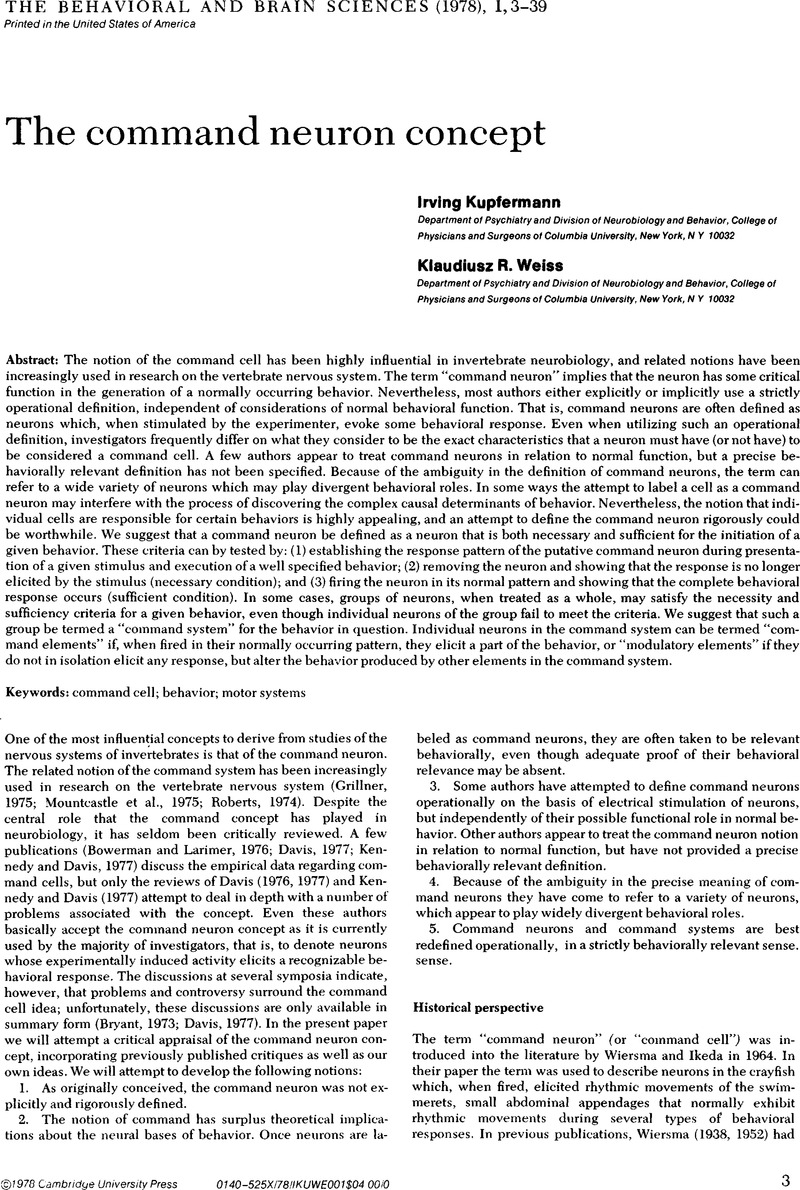No CrossRef data available.
Article contents
Triggering and organizing functions of command neurons in crayfish escape behavior
Published online by Cambridge University Press: 04 February 2010
Abstract
An abstract is not available for this content so a preview has been provided. Please use the Get access link above for information on how to access this content.

Information
- Type
- Open Peer Commentary
- Information
- Copyright
- Copyright © Cambridge University Press 1978
References
REFERENCES
Krasne, F. B.Excitation and habituation of the crayfish escape reflex: the depolarizing response in lateral giant fibres of the isolated abdomen. Journal of Experimental Biology. 50:29–46.1969.CrossRefGoogle ScholarPubMed
Krasne, F. B. and Bryan, J. S.Habituation: regulation through presynaptic inhibition. Science. 182:590–92. 1973.CrossRefGoogle ScholarPubMed
Mittenthal, J. E., and Wine, J. J.Connectivity patterns of crayfish giant intemeurons: visualization of synaptic regions with cobalt dye. Science. 179:182–84.1973.CrossRefGoogle Scholar
Wiersma, C. A. G. (1947). Giant nerve fiber system of the crayfish: a contribution to comparative physiology of synapse. Journal of Neurophysiology. 10:23–38. 1947.CrossRefGoogle ScholarPubMed
Wine, J. J.Neuronal organization of crayfish escape behavior: inhibition of giant motoneuron via a disynaptic pathway from other motoneurons. Journal of Neurophysiology. 40:1078–97.1977a.CrossRefGoogle Scholar
Crayfish escape behavior. II. Command-derived inhibition of abdominal extension. Journal of Comparative Physiology, (in press). 1977b.Google Scholar
Crayfish escape behavior. III. Monosynaptic and polysynaptic sensory pathways involved in phasic extension. Journal of Comparative Physiology, (in press). 1977c.Google Scholar
Wine, J. J. and Hagiwara, G.Durations of unitary synaptic potentials help time a behavioral sequence. Science, (in press).Google Scholar
Wine, J. J., and Mistick, D.The temporal organization of crayfish escape behavior: delayed recruitment of peripheral inhibition. Journal of Neurophysiology. 40:904–25. 1977.CrossRefGoogle ScholarPubMed
Zucker, R. A.Crayfish escape behavior and central synapses. I. Neural circuit exciting lateral giant fiber. Journal of Neurophysiology. 35:599–620.1972.CrossRefGoogle ScholarPubMed

